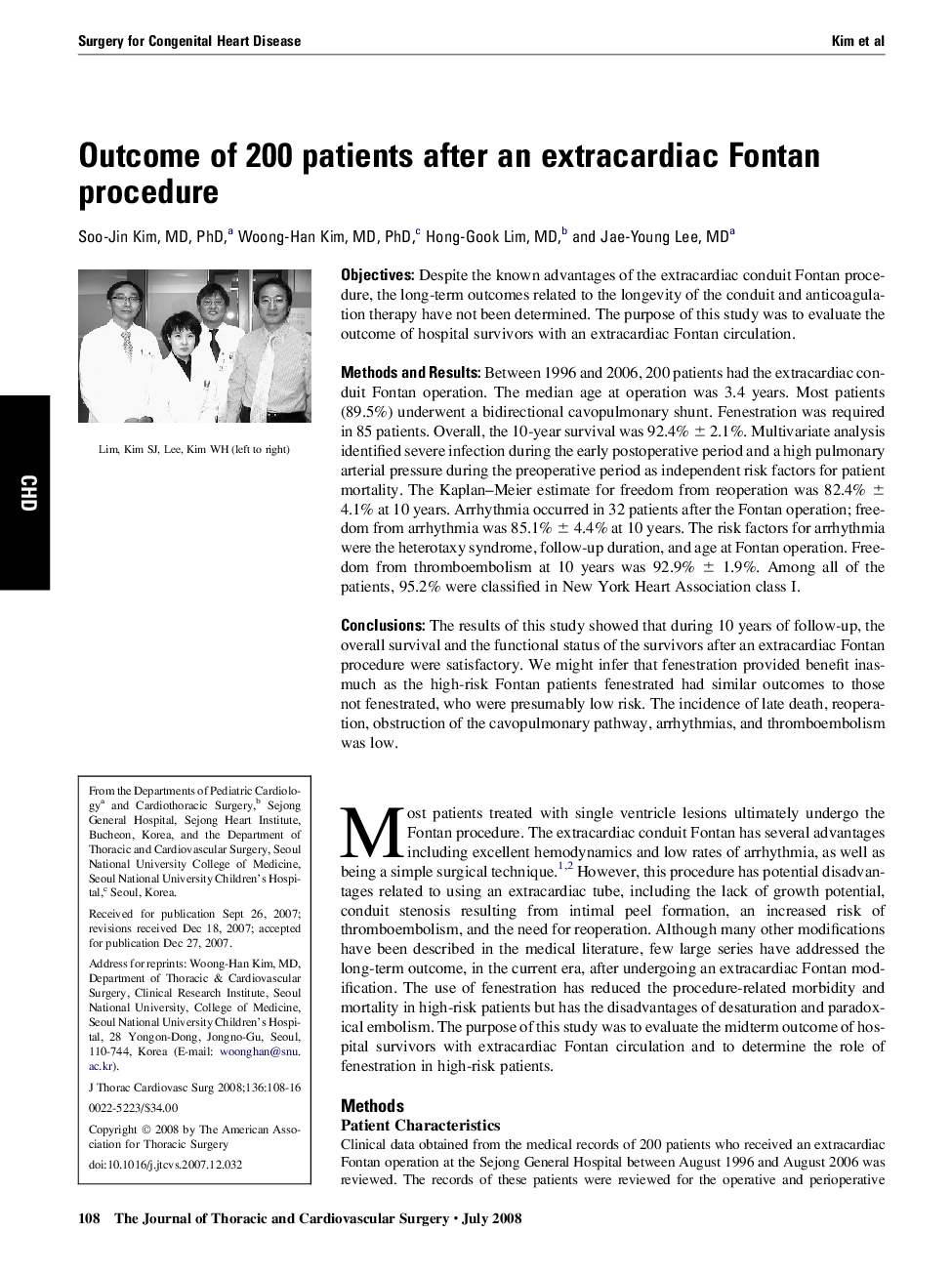| Article ID | Journal | Published Year | Pages | File Type |
|---|---|---|---|---|
| 2986169 | The Journal of Thoracic and Cardiovascular Surgery | 2008 | 9 Pages |
ObjectivesDespite the known advantages of the extracardiac conduit Fontan procedure, the long-term outcomes related to the longevity of the conduit and anticoagulation therapy have not been determined. The purpose of this study was to evaluate the outcome of hospital survivors with an extracardiac Fontan circulation.Methods and ResultsBetween 1996 and 2006, 200 patients had the extracardiac conduit Fontan operation. The median age at operation was 3.4 years. Most patients (89.5%) underwent a bidirectional cavopulmonary shunt. Fenestration was required in 85 patients. Overall, the 10-year survival was 92.4% ± 2.1%. Multivariate analysis identified severe infection during the early postoperative period and a high pulmonary arterial pressure during the preoperative period as independent risk factors for patient mortality. The Kaplan–Meier estimate for freedom from reoperation was 82.4% ± 4.1% at 10 years. Arrhythmia occurred in 32 patients after the Fontan operation; freedom from arrhythmia was 85.1% ± 4.4% at 10 years. The risk factors for arrhythmia were the heterotaxy syndrome, follow-up duration, and age at Fontan operation. Freedom from thromboembolism at 10 years was 92.9% ± 1.9%. Among all of the patients, 95.2% were classified in New York Heart Association class I.ConclusionsThe results of this study showed that during 10 years of follow-up, the overall survival and the functional status of the survivors after an extracardiac Fontan procedure were satisfactory. We might infer that fenestration provided benefit inasmuch as the high-risk Fontan patients fenestrated had similar outcomes to those not fenestrated, who were presumably low risk. The incidence of late death, reoperation, obstruction of the cavopulmonary pathway, arrhythmias, and thromboembolism was low.
